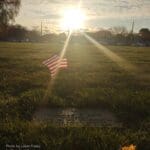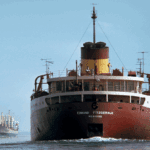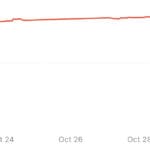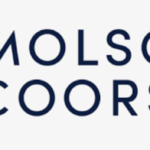The 2025 NFL Draft, set for April 24-26 at Lambeau Field and Titletown in Green Bay, actually marks the second time Wisconsin has hosted the league’s annual player selection meeting. The first occurred 85 years ago on Dec. 9, 1939, at the Schroeder Hotel in Milwaukee, a pivotal moment in the NFL’s early history that coincided with the 1939 NFL Championship Game the following day. This year’s event, the 90th draft, revives Wisconsin’s place in NFL lore, spotlighting a state steeped in football tradition.
The 1940 NFL Draft: Milwaukee’s Moment
The 1940 NFL Draft, held for the 1940 season, took place in the Empire Ballroom of the Schroeder Hotel, now the Hilton Milwaukee City Center, on Wisconsin Avenue in downtown Milwaukee. The hotel, opened in 1928, was a grand venue with ornate chandeliers and gold leaf decorations, its 16-foot windows illuminating the smoke-filled room where league officials and team representatives gathered. The draft, the fifth in NFL history, was a modest affair compared to today’s spectacle, attended by team owners, coaches, and a handful of sportswriters, with minimal public presence.
The choice of Milwaukee stemmed from its role as host of the 1939 NFL Championship Game, scheduled for Dec. 10, 1939, at Wisconsin State Fair Park in West Allis, just outside the city. The Green Bay Packers, led by coach Curly Lambeau, faced the New York Giants in the title game. Lambeau lobbied for Milwaukee over Green Bay’s City Stadium, citing the larger capacity of State Fair Park’s Milwaukee Mile, which could accommodate more fans and generate higher ticket revenue. The NFL, seeking to maximize profits, supported the move, though it sparked discontent among Green Bay fans who felt sidelined.
From 1937 through the early years of World War II, the NFL typically held the draft the day before or after the championship game, aligning the two events to streamline travel for team officials. Milwaukee’s selection as the championship host thus made it the logical choice for the 1940 draft. The decision proved lucrative: the championship game sold out 30,000 tickets within 24 hours, with seats priced at $4.40 scalped for as much as $15. Reports also noted 1,500 counterfeit tickets circulated, underscoring the event’s draw.
How the 1940 Draft Worked
The 1940 NFL Draft consisted of 20 rounds, with 10 teams selecting 200 players total. Unlike modern drafts, which rely on extensive scouting and analytics, the 1940 process was rudimentary. Teams evaluated players based on print media, hearsay, and limited scouting reports, often compiled from college game programs or informal observations. The draft order was determined by the previous season’s standings, with the worst-performing team picking first. The Chicago Cardinals, with the league’s poorest record, held the top pick.
A unique rule, implemented in 1938 and refined by 1939, shaped the draft’s structure. After the first round, the five teams with the worst records exclusively participated in the second round. All 10 teams resumed picking in the third round, but the five best teams were skipped in the fourth round. To compensate, the top five teams received two additional picks at the end of the 20th round. This system aimed to balance competitive parity by giving struggling teams earlier access to talent.
The draft began at 2 p.m. and concluded within a few hours, a stark contrast to today’s multi-day event. Team representatives sat at tables on the Empire Ballroom’s dance floor, with league officials on a bandstand overseeing a blackboard listing eligible college seniors. Before selections began, teams could add names to the list and remove juniors deemed ineligible, a precaution after errors like the Pittsburgh Pirates’ mistaken selection of an ineligible junior in 1939.
First-Round Selections
The 1940 NFL Draft’s first round featured 10 picks, with two players later enshrined in the Pro Football Hall of Fame. Below are the players selected, their positions, colleges, and drafting teams:
- George Cafego, fullback, Tennessee – Chicago Cardinals
- George McAfee, quarterback/back, Duke – Philadelphia Eagles (traded to Chicago Bears in 1940)
- John McLaughry, back, Brown – New York Giants
- John Pingel, back, Michigan State – Detroit Lions
- Mike Kabealo, back, Ohio State – Cleveland Rams
- Kay Eakin, back, Arkansas – Pittsburgh Pirates
- Clyde “Bulldog” Turner, center, Hardin-Simmons – Chicago Bears
- Edward Kolman, tackle, Temple – Brooklyn Dodgers
- Hal Van Every, back, Minnesota – Green Bay Packers
- Harry Smith, guard, USC – Washington Redskins
Notable outcomes included Cafego’s underwhelming career, marred by a knee injury and military service, and McAfee’s trade to the Bears, where he became a Hall of Fame standout. Turner, selected seventh, anchored the Bears’ line and earned Hall of Fame honors. The Packers’ pick, Van Every, played two seasons before entering the military during World War II. The Pirates’ selection of Eakin highlighted the era’s scouting limitations, as player evaluation remained an inexact science.
The Championship Game and Aftermath
The day after the draft, the Packers dominated the Giants 27-0 in the 1939 NFL Championship Game at State Fair Park, securing their fifth title. The game, a rematch of the 1938 championship won by New York, drew intense local interest, with trains from Green Bay and beyond ferrying fans to Milwaukee. The victory capped a successful weekend for the Packers, who also hosted a tenderloin dinner for draft attendees, followed by drinks at the Schlitz Brown Bottle, a nearby bar.
The 1940 draft’s legacy lies in its role as a steppingstone for the NFL’s growth. News accounts of the era indicate that with more than 30,000 people attending that game in West Allis, it was the largest crowd for any athletic competition in the state in history, at that time.
Wisconsin’s NFL Draft Revival
As Green Bay prepares to host the 2025 NFL Draft this week, the state reconnects with its football legacy. That 1940 draft in Milwaukee, though small in scale, reflected the NFL’s early efforts to formalize talent acquisition.. Today’s draft, with its global audience and elaborate production, stands in sharp contrast to the Empire Ballroom’s smoke-filled deliberations, but both events underscore Wisconsin’s history-making football passion.












